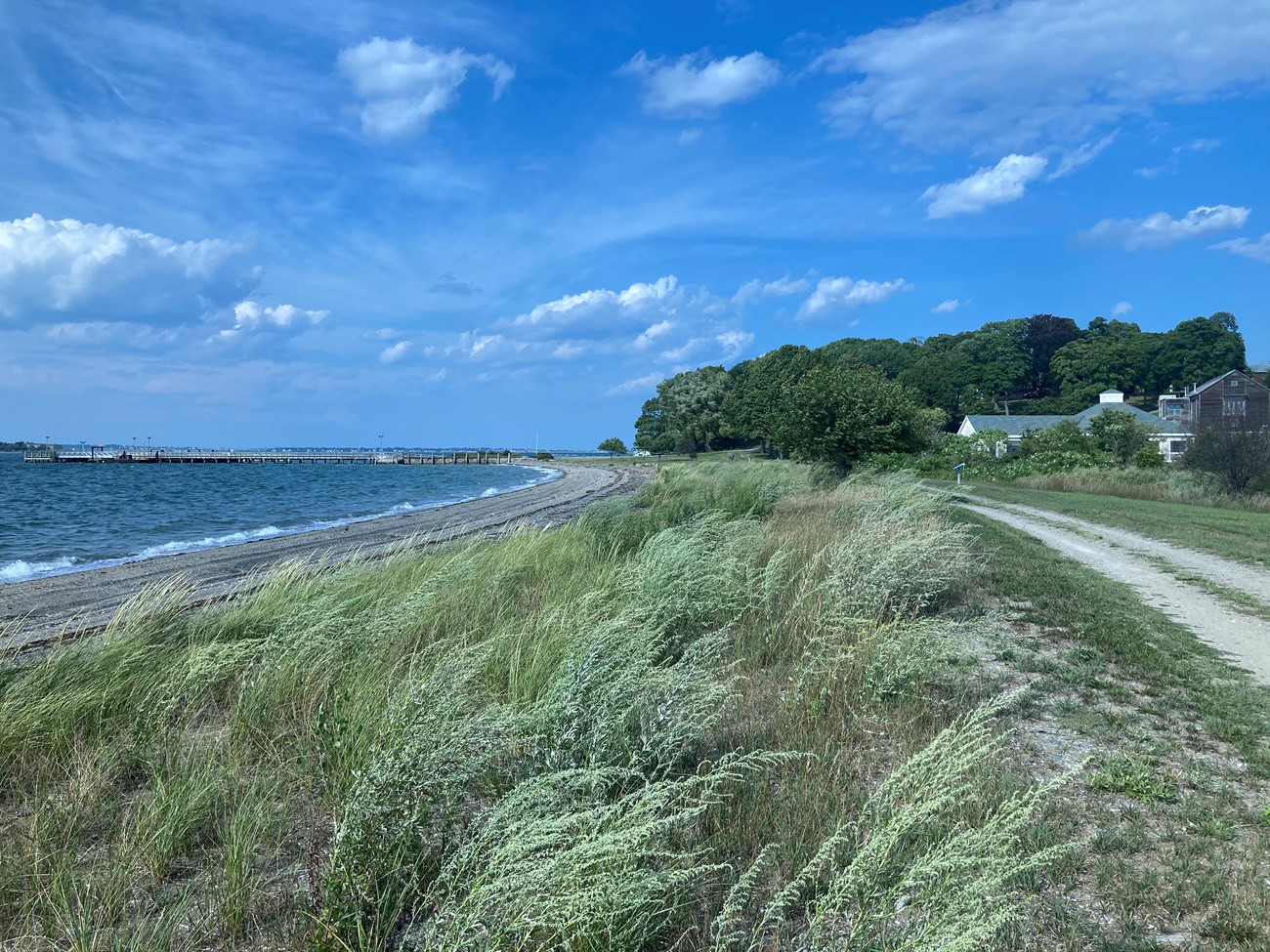
NPS Photo/ Yates This island of diverse habitats is home to Thompson Island Outward Bound Education Center. Thompson Island is home to Thompson Island Outward Bound Education Center, a non-profit organization that puts people in fun but challenging situations in order to help them develop teamwork, compassion, and self-confidence. Activities include sailing, climbing, leadership training and environmental exploration. The island's services include: summertime expeditions for youths ages 12-17; leadership, environmental education and summer learning programs for youth groups; and corporate teambuilding with Outward Bound Professional. Thompson Island Signature Events and Conference Center also offers catered clambakes, company outings, parties, weddings, and meetings. General InformationThis island of Boston Harbor Islands National and State Park is managed by Thompson Island Outward Bound Education Center (TIOBEC). For more information on public access to the island, please visit our partnership website page for Thompson Island. In 2004, a Grant of Conservation Restriction between Thompson Island Outward Bound Education Center, National Park Service, and Department of Conservation and Recreation was signed. This Conservation Restriction is an agreement to the "appropriate balance between: (i) the continued growth and development of the Thompson Island Outward Bound Education Center's educational programs as a part of its unique role in providing such active outdoor environmental education programs as a part of the Boston Harbor Islands Partnership, (ii) enjoyment of access to the natural environment of the Conservation Area by members of the public on both an escorted and unescorted basis, and (iii) protection of the natural environment of the island from damage and overuse." The Conservation Restriction also lays out specific provisions, prohibited activities, and reserved rights agreed upon by Thompson Island Outward Bound Education Center, National Park Service, and Department of Conservation and Recreation. For more information regarding the Conservation Restriction, please review the full text of the Grant of Conservation Restriction or search for “Thompson Island” on the Suffolk County Registry of Deeds’ website. Visitor Facilities & Services
On-island Circulation: ISLAND OPEN TO GENERAL PUBLIC ON SUNDAYS DURING THE SUMMER SEASON. Approximately one half mile of paved roads are located in the school complex and two miles of gravel roads extend along the length of the island. Paths extend throughout the campus area and into woodland areas. Short HistoryPrior to European colonization, Indigenous communities lived on the island. David Thompson established a trading post on the island in 1626. During the next two centuries, ownership of the island changed several times but was used primarily for grazing livestock. In 1833 the Boston Farm School was established on Thompson Island and merged with the Boston Asylum for Boys two years later. Renamed the Boston Farm and Trade School in 1907, its vocational and farming emphasis remained until the middle of the 1900s when it was renamed Thompson Academy. In 1988, Outward Bound partnered to operate the island, creating a new entity - Thompson Island Outward Bound Education Center. The island continues its mission to serve the underserved youth of Greater Boston with programs that instill teamwork, self-confidence and compassion, and encourage learning by doing. Natural History OverviewVegetationThe island is a mix of hardwood tree stands, remnant pear and apple orchards, ornamental trees and shrubs, open meadows, shrubby areas of successional growth, sumac groves, salt marsh grasses, and manicured lawns, including a soccer field. WildlifeThomson Island is home to many animals, including egrets, herons, peregrine falcons and hermit crabs. Please see Animals page for more information. GeologyThe island’s highest drumlin rises to an elevation of 78 feet on the northeastern half of the island, where the school complex is located. The remainder of the island is composed of low rolling hills dissected by a wetland and salt marsh. At low tide, a sandspit and mudflats on the south side of the island almost connect with Squantum. Water FeaturesFurther study required. Views and VistasViews to Dorchester, Downtown Boston, South Boston, Quincy (Squantum), and Long, Moon, Spectacle, and Castle Islands. StructuresThe following is a rough list of buildings, and foundations-further verification is needed:
|
Last updated: November 30, 2023
